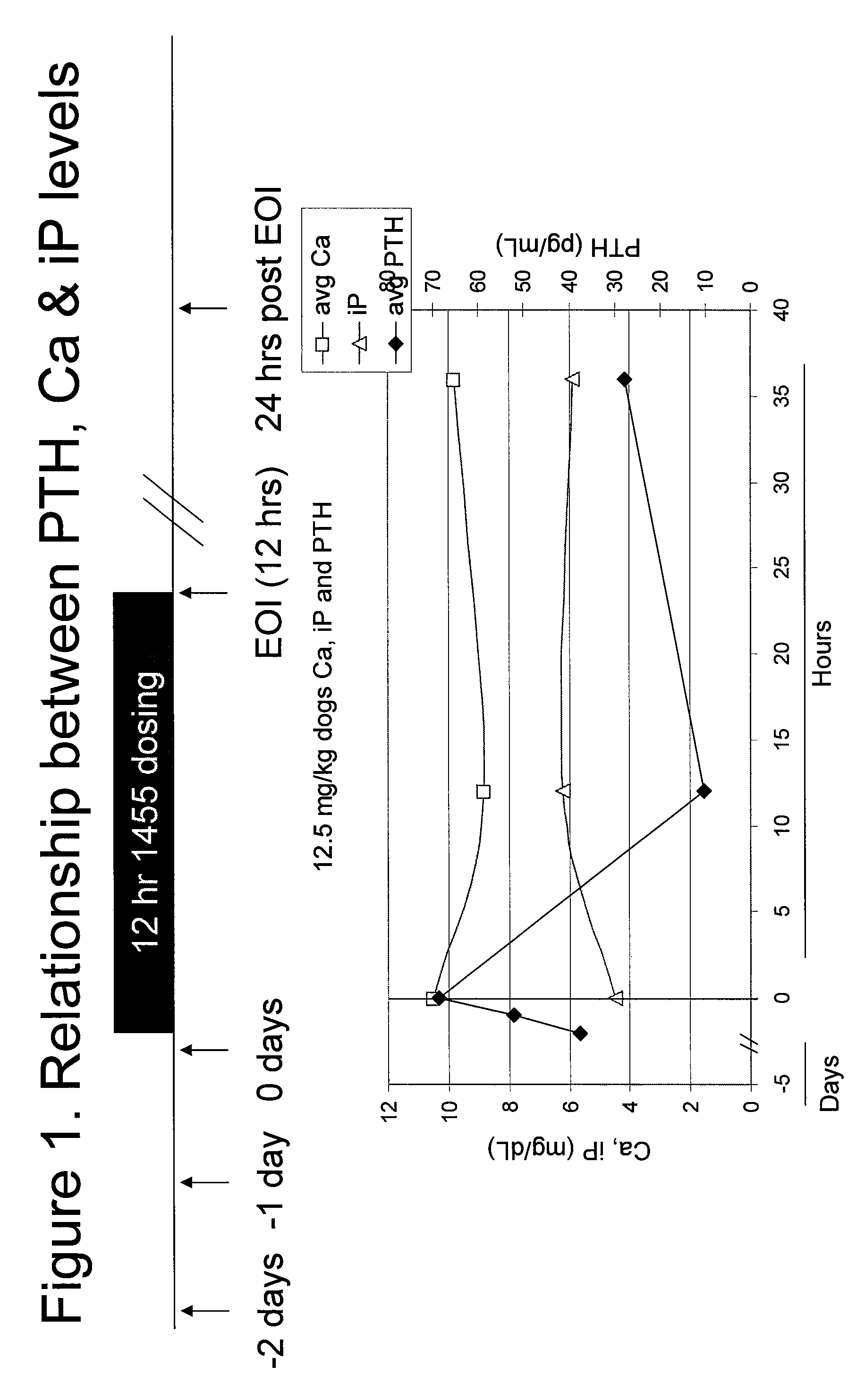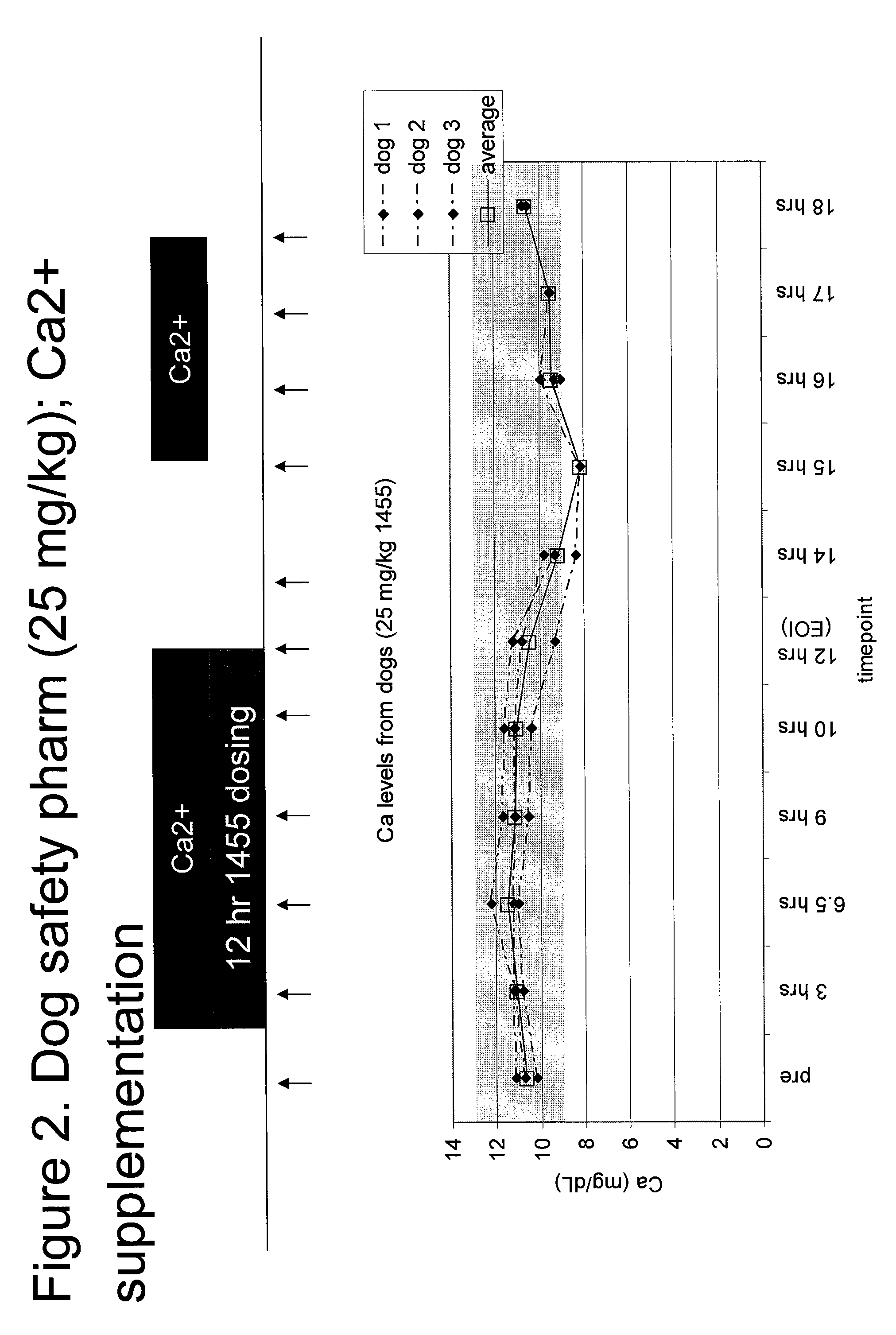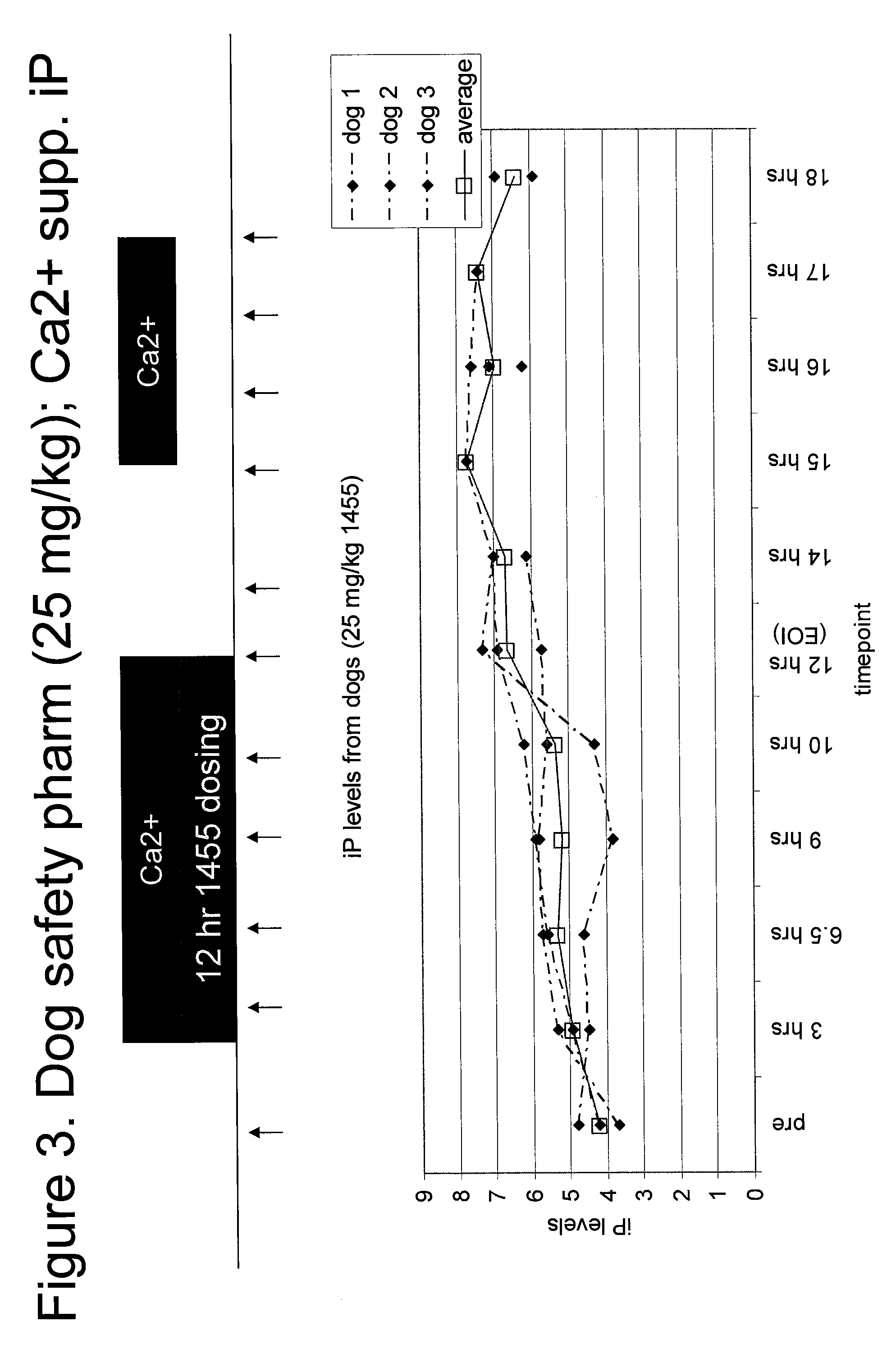Polycationic calcium modulator peptides for the treatment of hyperparathyroidism and hypercalcemic disorders
a hypercalcemic disorder and polycationic technology, applied in the field of polycationic calcium modulator peptides, can solve the problems of high serum calcium, poor prognosis, and excessive bone resorption, and achieve the effects of reducing serum calcium, reducing serum pth, and reducing serum calcium
- Summary
- Abstract
- Description
- Claims
- Application Information
AI Technical Summary
Benefits of technology
Problems solved by technology
Method used
Image
Examples
example 1
Preparation of Test and Vehicle / Control Articles
[0209]An appropriate quantity of KAI-1455 (SEQ ID NO:7) was dissolved in a solution of 32.5 mg / mL mannitol and 32.5 mg / mL sucrose in Water for Injection (supplied by ITR) to achieve a stock concentration of 10 mg / mL of KAI-1455. The pH was adjusted to ˜5, if necessary. The stock solution was diluted with sterile Saline for Injection to achieve the final dose solution concentrations. The solutions were filtered into a sterile container / bag, via 0.22 pm PVDF filter(s) (Millipore) prior to administration to the animals, and kept refrigerated until shortly before dosing, then allowed to warm to room temperature.
[0210]The solution of vehicle control was prepared by taking an appropriate volume of the 32.5 mg / mL mannitol / 32.5 mg / mL sucrose solution in WFI and diluting this approximately 4.44-fold with SF1 (i.e., the same dilution ratio as for the high-dose solution of test article).
example 2
Single-Dose Continuous Intravenous Infusion Toxicity and Toxicokinetic / Tissue Distribution Study of KAI-1455 in Rats with a 14-Day Recovery Period
[0211]The study was conducted in Sprague Dawley rats (strain Crl:CD(SD)) obtained from Charles River Laboratories, Raleigh, N.C. A total of 42 rats (21 male and 21 female) were included in the study, with an n=3 per group. The average body weight range at the onset of treatment was 7-11 kg. The average age range at the start of treatment was 6-7 weeks for catheterization and 10-12 weeks for initiation of treatment. Average weight at initiation of treatment was 100 to 400 grams.
[0212]Administration of the Test and Control / Vehicle Articles:
[0213]Animals were catheterized via a femoral vein by the supplier. The appropriate dose was administered by intravenous infusion via a catheter implanted in a femoral vein. KAI-1455 (SEQ ID NO:7) was administered to rats by continuous intravenous infusion at doses of 10, 20 and 45 mg / kg over 24 hours, and...
example 3
A Single-dose (24-Hour) Continuous Intravenous Infusion Toxicity and Toxicokinetic / Tissue Distribution Study of KAI-1455 in Beagle Dogs
[0219]The study was conducted in beagle dogs obtained from Marshall BioResources, Inc. A total of 24 dogs were included in the study (12 males, 12 females), with n=3 / sex per group. The average body weight range at the onset of treatment was 7-11 kg. The average age range at the start of treatment was 7-11 months old.
[0220]Administration of the Test and Control / Vehicle Articles:
[0221]KAI-1455 (SEQ ID NO:7) and control articles were administered over a single 24-hour period by intravenous infusion at a dose rate of 0.83 mL / kg / hour, via a disposable indwelling catheter (Abbocath® or Angiocath®) inserted into one of the cephalic or saphenous veins and connected to an infusion pump by means of medical-grade tubing. The actual volume (mL) infused was calculated based on the most recent practical body weight of each animal.
[0222]KAI-1455 was administered at...
PUM
 Login to View More
Login to View More Abstract
Description
Claims
Application Information
 Login to View More
Login to View More - R&D
- Intellectual Property
- Life Sciences
- Materials
- Tech Scout
- Unparalleled Data Quality
- Higher Quality Content
- 60% Fewer Hallucinations
Browse by: Latest US Patents, China's latest patents, Technical Efficacy Thesaurus, Application Domain, Technology Topic, Popular Technical Reports.
© 2025 PatSnap. All rights reserved.Legal|Privacy policy|Modern Slavery Act Transparency Statement|Sitemap|About US| Contact US: help@patsnap.com



